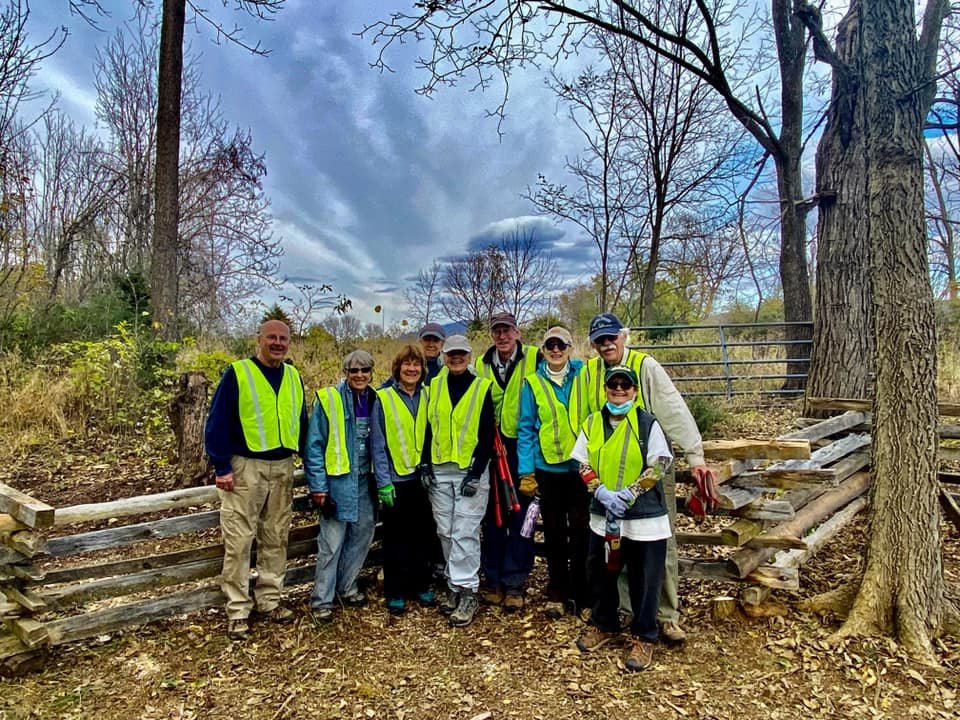
Resource Management
Responsible Stewardship of the Valley’s Historic Lands
As the owner and steward of more than 6,400 battlefield acres, the Shenandoah Valley Battlefields Foundation has a public trust responsibility to ensure that these landscapes are managed responsibly and in a way that ensures that they can be experienced by future generations of Americans.
To guide its stewardship activities, the Battlefields Foundation maintains a set of management policies for land it owns, all of which have been approved by the Foundation’s Board of Trustees.
Crafted with assistance from the National Park Service, the Virginia Department of Historic Resources, and partner organizations throughout the Valley, these policies are designed to safeguard the fragile resources that may still exist on that land, while allowing for outdoor recreational activities, appropriate living history demonstrations, and other uses. In many cases, the land continues to be farmed the way it has been since before the Civil War.
As an important first step in the stewardship of battlefield land, the Battlefields Foundation has develops cultural resources reports—including archeological surveys—for each of its properties. These reports help the Foundation and its partners better understand the fabric of these historic landscapes, a key factor in determining how to best interpret them while protecting their historic integrity.
With this information, decisions can be made about where certain parts of the story can best be told, which interpretive device will be most appropriate for each site, and how to encourage visitors to explore the battlefield without degrading it.
Stewardship remains a critical component of the Foundation’s role in protecting the integrity of these American battlefields for generations to come.
America’s Hidden Battlefields: Protecting the Archeological Story
America’s battlefields teach us about some of the most important events in our history. We also value them because they commemorate the selfless sacrifices made by our ancestors who fought there. They inspire us to contemplate the meaning of the battle, its causes, its cost, and consequences. They connect us to our past.
There is more to a battlefield than immediately meets the eye. An important piece of this irreplaceable landscape is the reality of that long-ago battle that lies hidden underground. This is the archeological evidence of the momentous and mundane events that took place here. Through the protection, study, and interpretation of this evidence, we can enhance our own understanding of those events, and we can ensure that the battle itself is more than just a memory in an ever-changing world.
When archeologists study a battlefield, our understanding of that battle often becomes clearer. An archeological study may reveal unmarked graves, bullets or cartridge cases, fragments of clothing, traces of lost roadways, old campsites, vanished buildings, lines of earthen fortifications, and even ships sunk in naval battles. Such evidence has been used to verify troop movements, map out battle actions in time and space, reveal previously unrecorded facets of the battles, and even disprove long-believed myths or “official” accounts. Archeology offers us tangible, real evidence of soldiers waiting and fighting, advancing or retreating, constructing and defending fortifications, treating the wounded in hospitals, and burying the dead.
Archeological evidence on battlefields is fragile and is easily damaged or destroyed. We can safeguard America’s historic battlefields by working in partnership with professional archeologists, park managers, local historical and preservation groups, and state historic preservation officers.
It is important for us to take care in our own actions and encourage others to join us in safeguarding the physical evidence of battle, both above and below ground. We must respect these sites for all they can teach and for all they represent.
